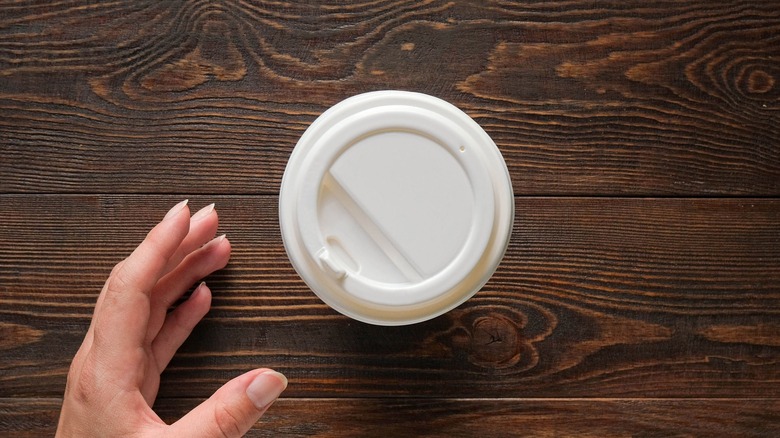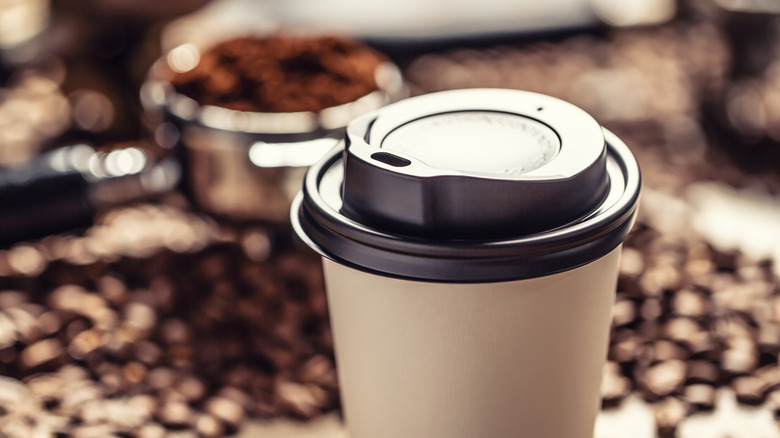The Genius Reason There's A Tiny Hole In Your Coffee Lid
When most of us think about industrial design (if we ever do), we probably think of cars or smartphones. But stop for a moment while you're sipping your to-go coffee and consider what you're holding. The humble coffee lid that prevents you from sloshing your beverage everywhere is an engineering marvel that uses decades of research and development to offer the consumer the best — and safest — coffee-drinking experience possible.
Back in the 1970s, before a slew of advancements in coffee-lid design, the covering on a cup of joe looked very different. "Hot drinks were sold in smaller, disposable cups with tight-fitting, opaque lids, which had no penetrations other than a small pinhole to allow steam to escape," author Louise Harpman wrote in her 2018 book "Coffee Lids: Peel, Pinch, Pucker, Puncture." But what began as a simple air vent would, by the 1980s, become a vital part of the coffee lid that helped prevent the vacuum that lips made against the lid's opening. Without it, the flow of coffee into your mouth wouldn't be as smooth since air couldn't enter the cup to replace the liquid.
A coffee cup revolution
Ever since Kaldi, the Abyssinian goat herder of legend who supposedly invented coffee in A.D. 850 — and who is just one piece of the fascinating mythos behind the first cup of coffee — people have been finding new and better ways to drink the beverage. In 1980s America, it was all about the lid. While many manufacturers made advancements, the Solo Cup Company Traveler lid was what changed the game in 1984. The lid's design prevented coffee from splashing out of the opening, cooled the coffee a bit before it reached your mouth, and — thanks to an additional hole in the top — also solved the vacuum issue.
Inventor Jack Clements, who worked for the Solo Cup Company, is credited with the Traveler lid's design. As he described in his patent application, "A vent hole is formed near the center of the top wall to enable air to flow into the cup as the user drinks from the cup to facilitate the flow of liquid out of the cup through the drinking opening" (via Google Patents). Now, the next time you take a sip of your McDonald's coffee, you can thank Clements and other industrial designers for the smooth flow of liquid from cup to mouth. (And if you find yourself in need of coffee on the go, we've ranked fast food coffees from worst to best.)

